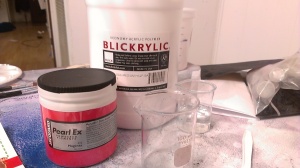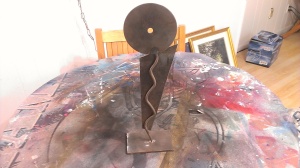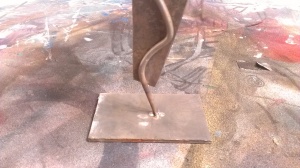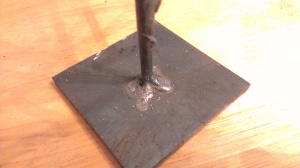Vibrant Iridescent Glazes
I present this finished work as a followup to my post “Braving Bitter Cold to Create Metal Art”. Although the Reflex Violet Pearl Ex mica pigment that was airbrushed looks cool, the real magic is the layers of blue green paint on the triangulated plate. A base of opaque blue green was followed by various shades of turquoise and blue. The final touch was a glaze made from gloss acrylic medium and metallic blue green.
Playful Golden Curve
The purple and the iridescent turquoise glaze are stunning for sure but a little on the cool side. This sculpture needed a contrasting color for the curved accent. The royal gold color answered this call well. It is warm and sunny but not so blazing hot that is takes the focus away from the background.
In the past, I usually painted the bases to my table top sculptures gloss black. This time I used phthalo blue. The base will look great against a light colored marble surface.
This post modern table sculpture is available in my Etsy shop.
Related articles
- The Various Styles of My Metal Art (jtbmetaldesigns.wordpress.com)
- the Nature of Abstraction (rondapalazzari.typepad.com)
- Airbrushing Mica Powders in Acrylic Medium (jtbmetaldesigns.wordpress.com)
- Iridescent. (themedhead.wordpress.com)
- Pheasant Feather Abstracted (micahrichardson.com)


































